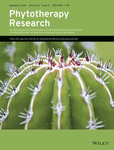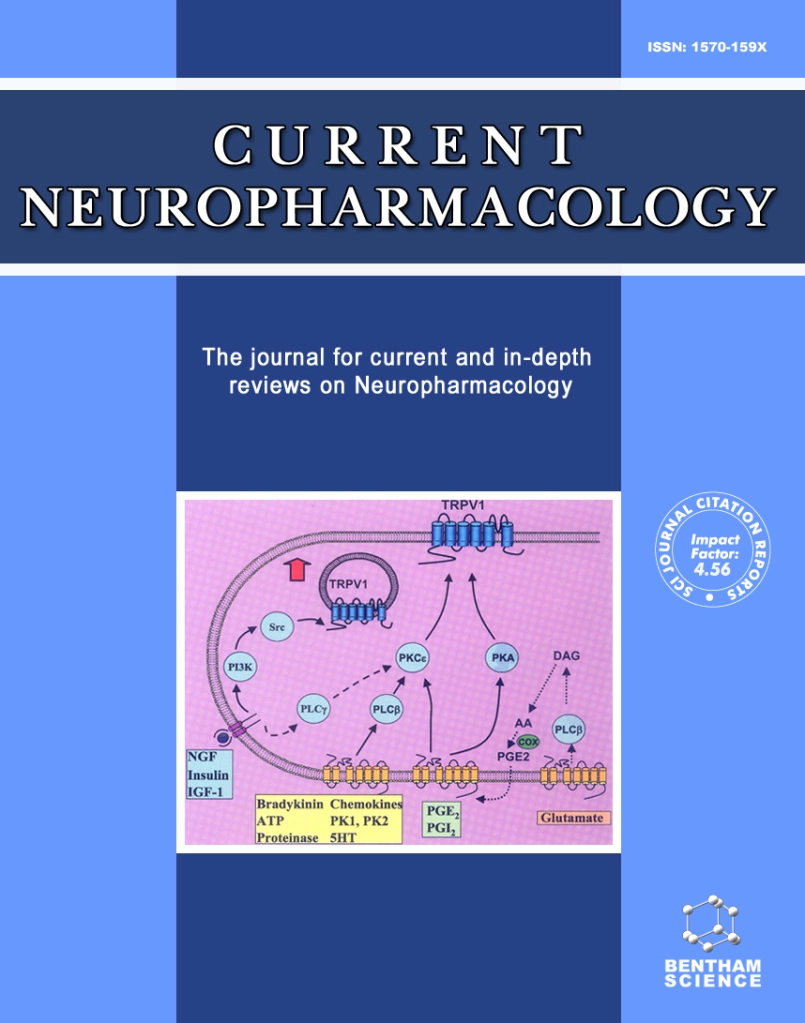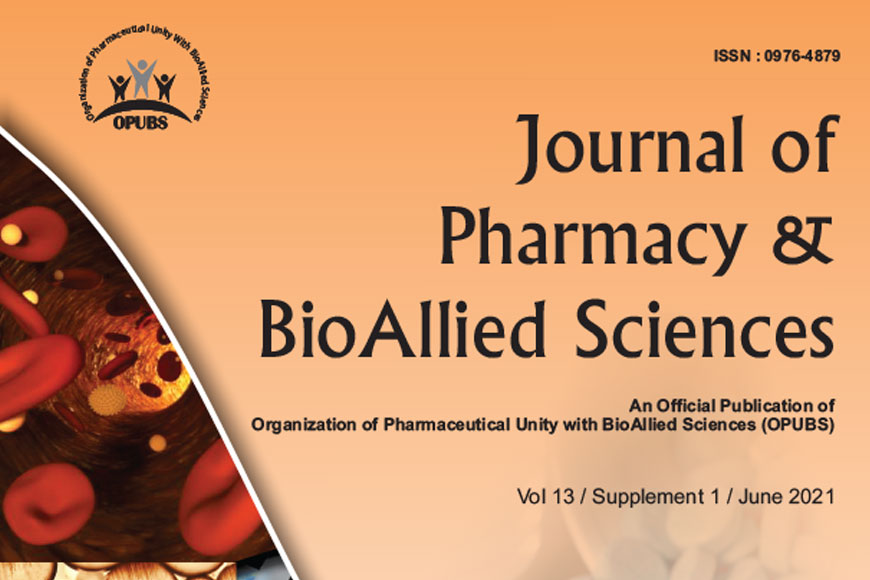Crocin
How to submit an article:
- Registered users can submit any published journal article that has a unique DOI (Digital Object Identifier) name or link to Research Hub.
- For example, you can paste the full DOI link:
https://doi.org/10.1109/5.771073or just the DOI name:10.1109/5.771073into the field above and click submit. - The person who is first to submit a valid article to Research Hub will forever be credited for it, and every article submission earns you +6 Research Points.
Published research studies are articles that present the findings of original research that has undergone a peer-review process and has been made publicly available in scholarly journals, books or other media.

Network pharmacology-based strategic prediction and target identification of apocarotenoids and carotenoids from standardized Kashmir saffron (Crocus sativus L.) extract against polycystic ovary syndrome
2023 Aug 11 Medicine Tiwari A, Modi SJ, Girme A, Hingorani L
Network Pharmacology SaffronThe compounds apocarotenoids and carotenoids found in saffron extract could potentially interact with multiple targets, helping to manage the symptoms of polycystic ovary syndrome.

Advances on the anti-tumor mechanisms of the carotenoid Crocin
2023 Jun 29 PeerJ Bao X, Hu J, Zhao Y, Jia R, Zhang H, Xia L
Review Article Liver Cancer Saffron Breast Cancer Stomach Cancer Colorectal Cancer Cervical Cancer Anti-TumourCrocin, a compound derived from saffron, has shown considerable potential in hindering tumor growth and improving immune status, across various malignant tumors.

Effects of crocin supplementation on inflammatory markers, lipid profiles, insulin and cardioprotective indices in women with PCOS: A randomized, double‐blind, placebo‐controlled trial
2022 Apr 26 Phytotherapy Research Rahimi G, Shams S, Aslani MR
Crocin intervention (15 mg, twice daily) significantly increased high-density lipoprotein cholesterol, suppressed the increase in low-density lipoprotein cholesterol, triglycerides, and total cholesterol levels, and improved insulin and cardioprotective indices in women with PCOS. Additionally, crocin demonstrated protective effects against the increase in inflammatory markers (IL-6 and TNF-α) observed in the placebo group. The findings suggest that crocin supplementation may be beneficial in the therapeutic management of PCOS.
Clinical Study Randomised Controlled Trial
Anti-Depressant Properties of Crocin Molecules in Saffron
2022 Mar 23 Molecules Siddiqui SA, Ali Redha A, Snoeck ER, Singh S, Simal-Gandara J, Ibrahim SA, et al.
Experimental Study Review Article Depression SaffronSaffron and its bioactive molecules, notably crocins, have been found to be as effective as common antidepressants in treating depression disorders.

Pharmacological Effects of Saffron and its Constituents in Ocular Disorders from in vitro Studies to Clinical Trials: A Systematic Review
2021 Mar Current Neuropharmacology Sepahi S, Ghorani-Azam A, Hossieni SM, Mohajeri SA, Khodaverdi E
Review Article Systematic Review Retinitis Pigmentosa SaffronSaffron and its components, crocin and crocetin, show potential in treating various eye disorders, including inflammation, macular edema, and glaucoma.
Research insights are moderated by the Research Hub team and offer an at-a-glance overview of interesting research findings.

2023 Medicine
The compounds apocarotenoids and carotenoids found in saffron extract could potentially interact with multiple targets, helping to manage the symptoms of polycystic ovary syndrome.
Network Pharmacology Saffron
Network pharmacology-based strategic prediction and target identification of apocarotenoids and carotenoids from standardized Kashmir saffron (Crocus sativus L.) extract against polycystic ovary syndrome
Tiwari A, Modi SJ, Girme A, Hingorani L

2023 PeerJ
Crocin, a compound derived from saffron, has shown considerable potential in hindering tumor growth and improving immune status, across various malignant tumors.
Review Article Anti-Tumour Breast Cancer Cervical Cancer Colorectal Cancer Liver Cancer
Advances on the anti-tumor mechanisms of the carotenoid Crocin
Bao X, Hu J, Zhao Y, Jia R, Zhang H, Xia L

2022 Molecules
Saffron and its bioactive molecules, notably crocins, have been found to be as effective as common antidepressants in treating depression disorders.
Experimental Study Depression Saffron
Anti-Depressant Properties of Crocin Molecules in Saffron
Siddiqui SA, Ali Redha A, Snoeck ER, Singh S, Simal-Gandara J, Ibrahim SA, et al.

2021 Current Neuropharmacology
Saffron and its components, crocin and crocetin, show potential in treating various eye disorders, including inflammation, macular edema, and glaucoma.
Review Article Retinitis Pigmentosa Saffron
Pharmacological Effects of Saffron and its Constituents in Ocular Disorders from in vitro Studies to Clinical Trials: A Systematic Review
Sepahi S, Ghorani-Azam A, Hossieni SM, Mohajeri SA, Khodaverdi E

2018 Journal of Pharmacy And Bioallied Sciences
Saffron possesses major bioactive compounds such as safranal, crocin, and picrocrocin that are hypothesized to be integral to its antidepressant effects.
Review Article Benefit Depression Saffron
Saffron (Crocus sativus L.): As an antidepressant
Siddiqui MJ, Saleh MSM, Basharuddin SNBB, Zamri SHB, Mohd Najib MH, Che Ibrahim MZ, et al.
Review Articles
Review articles summarise and critically evaluate the current state of research on a specific topic or field by synthesising multiple primary research studies.

Advances on the anti-tumor mechanisms of the carotenoid Crocin
2023 Jun 29 PeerJ Bao X, Hu J, Zhao Y, Jia R, Zhang H, Xia L
Review Article Liver Cancer Saffron Breast Cancer Stomach Cancer Colorectal Cancer Cervical Cancer Anti-TumourCrocin, a compound derived from saffron, has shown considerable potential in hindering tumor growth and improving immune status, across various malignant tumors.

Anti-Depressant Properties of Crocin Molecules in Saffron
2022 Mar 23 Molecules Siddiqui SA, Ali Redha A, Snoeck ER, Singh S, Simal-Gandara J, Ibrahim SA, et al.
Experimental Study Review Article Depression SaffronSaffron and its bioactive molecules, notably crocins, have been found to be as effective as common antidepressants in treating depression disorders.

Pharmacological Effects of Saffron and its Constituents in Ocular Disorders from in vitro Studies to Clinical Trials: A Systematic Review
2021 Mar Current Neuropharmacology Sepahi S, Ghorani-Azam A, Hossieni SM, Mohajeri SA, Khodaverdi E
Review Article Systematic Review Retinitis Pigmentosa SaffronSaffron and its components, crocin and crocetin, show potential in treating various eye disorders, including inflammation, macular edema, and glaucoma.

Saffron (Crocus sativus L.): As an antidepressant
2018 Jan Journal of Pharmacy And Bioallied Sciences Siddiqui MJ, Saleh MSM, Basharuddin SNBB, Zamri SHB, Mohd Najib MH, Che Ibrahim MZ, et al.
Review Article Saffron Crocin Depression BenefitSaffron possesses major bioactive compounds such as safranal, crocin, and picrocrocin that are hypothesized to be integral to its antidepressant effects.
Clinical Trials
Clinical trials are research studies that involve people and are conducted to evaluate the safety and efficacy of new treatments or interventions, such as drugs, medical devices, or behavioural therapies.
Study Protocols
Published study protocols are detailed plans that outline the objectives, methodology, statistical analyses, and organisation of a research study that have been made publicly available for others to review and use as a reference.
Presentation Slides

Network Pharmacology
The compounds apocarotenoids and carotenoids found in saffron extract could potentially interact with multiple targets, helping to manage the symptoms of polycystic ovary syndrome.
Tiwari A, Modi SJ, Girme A, Hingorani L

Review Article
Crocin, a compound derived from saffron, has shown considerable potential in hindering tumor growth and improving immune status, across various malignant tumors.
Bao X, Hu J, Zhao Y, Jia R, Zhang H, Xia L

Experimental Study
Saffron and its bioactive molecules, notably crocins, have been found to be as effective as common antidepressants in treating depression disorders.
Siddiqui SA, Ali Redha A, Snoeck ER, Singh S, Simal-Gandara J, Ibrahim SA, Jafari SM

Review Article
Saffron and its components, crocin and crocetin, show potential in treating various eye disorders, including inflammation, macular edema, and glaucoma.
Sepahi S, Ghorani-Azam A, Hossieni SM, Mohajeri SA, Khodaverdi E

Review Article
Saffron possesses major bioactive compounds such as safranal, crocin, and picrocrocin that are hypothesized to be integral to its antidepressant effects.
Siddiqui MJ, Saleh MSM, Basharuddin SNBB, Zamri SHB, Mohd Najib MH, Che Ibrahim MZ, binti Mohd Noor NA, Binti Mazha HN, Mohd Hassan N, Khatib A
Executive Summary
Write an executive summary in the form of a blog article on the topic of "Research into Chinese medicine treatment for Crocin" summarising the research below and using language that can be easily understood by patients and avoiding medical jargon using a professional and caring tone of voice.
Write an executive summary in the form of a blog article on the topic of "Researched Chinese medicine treatments for Crocin" summarising the research below in an objective and easy to understand way, and using language that can be easily understood by patients. Group the article into Chinese medicine treatments first, followed by nutrition and other treatments. Avoid using medical jargon and use a professional and caring tone of voice.
Write me a concise but easy to understand executive summary on the topic of "Chinese medicine treatments for Crocin" based on the following research that I will give you. Your summary should be 2 paragraphs long in Australian English spelling and include references to the studies.
A Network Pharmacology published in 2023 in the journal Medicine found that The compounds apocarotenoids and carotenoids found in saffron extract could potentially interact with multiple targets, helping to manage the symptoms of polycystic ovary syndrome. The study utilized a network pharmacology-based approach to identify the possible therapeutic pathways for apocarotenoids and carotenoids in Crocus sativus on polycystic ovary syndrome. The Ultra-High-Performance Liquid Chromatography with Photodiode Array detector (UHPLC-PDA) standardized stigma-based Crocus sativus extract (CSE) was analyzed for these phytochemicals. Information about polycystic ovary syndrome related genes was collected from a knowledge database and networks were established between these targets and Crocus sativus extract phytochemicals to understand its mechanism of action. Through network analysis and screening conditions, the study found four significant targets, including serine/threonine kinase 1, signal transducer and activator of transcription, and two types of mitogen-activated protein kinases. Gene ontology and Kyoto Encyclopaedia of genes and genomes analysis showed that MAP kinase and serine-threonine pathways were crucial targets in polycystic ovary syndrome. Further molecular docking studies were conducted, and carotenoids apocarotenoids were assessed for absorption, distribution, metabolism, excretion, and toxicity predictions. Elements like crocetin, picrocrocin, and safranal showed strong binding affinity for the identified targets. This analysis also revealed that these compounds had excellent bioavailability and could cross the blood-brain barrier without demonstrating toxicity. In summary, the study demonstrated that these phytochemicals could act on the identified targets, thus pointing towards the potentiality of Crocus sativus extract in managing polycystic ovary syndrome.
A Review Article published in 2023 in the journal PeerJ found that Crocin, a compound derived from saffron, has shown considerable potential in hindering tumor growth and improving immune status, across various malignant tumors. The methodology for the study involved an in-depth review of modern pharmacological studies that have analyzed the therapeutic effects of crocin, a natural compound that can be extracted from saffron. Various anti-tumor effects were assessed including the induction of tumor cell death (apoptosis), restrictions on tumor cell proliferation, and potential barriers to invasion and metastasis of these cells. The potential for enhancement of sensitivity to chemotherapy and improvement of immune status were also examined. Following the review, the study revealed that crocin has significant anti-tumor properties. It showed that this natural compound can induce apoptosis in tumor cells, inhibit their expansion and progression, and even prevent their invasiveness and metastasis. Furthermore, crocin demonstrated the potential to enhance the body’s responsiveness to chemotherapy and help boost the immune system. These effects were observed across a range of different malignant tumors, including stomach, liver, cervical, breast, and colorectal cancers.
A Experimental Study published in 2022 in the journal Molecules found that Saffron and its bioactive molecules, notably crocins, have been found to be as effective as common antidepressants in treating depression disorders. The methodology of the research centered on the incredible therapeutic properties of saffron, more specifically its bioactive molecules known as crocins. These molecules were singled out as they have shown a capacity to inhibit monoamine oxidase type A and B. The researchers also conducted experiments with saffron petal extracts, observing their impact on contractile response in electrical field stimulation. There were further investigations into saffron's ability to inhibit the reuptake of monoamines, display -methyl-d-aspartate antagonism, and enhance brain-derived neurotrophic factor signaling. The discussion of the results highlighted the effectiveness of saffron and its crocins in treating depressive disorders. From several experimental studies, it became apparent that saffron and crocins might perform similarly to fluoxetine and imipramine, both widely accepted antidepressant drugs. As such, the paper suggests that these natural elements found in saffron could offer an alternative treatment method for depression. The limitations, however, as highlighted in the study, were issues surrounding stability and delivery of the herbal treatment.
A Review Article published in 2021 in the journal Current Neuropharmacology found that Saffron and its components, crocin and crocetin, show potential in treating various eye disorders, including inflammation, macular edema, and glaucoma. Using key search terms like "eye disorders" and "saffron", the authors conducted a systematic review of various literature databases such as PubMed, Scopus, Web of Science, and Google Scholar. Their search included all types of studies, with no strict inclusion criteria, covering clinical studies, in vivo and in vitro studies. They extracted data from each study for qualitative analysis. The review started with 78 articles, narrowed down to 29 relevant ones. Nine articles were clinical trials, and 20 articles examined the impact of saffron on cellular and molecular aspects of eye disorders. Through their analysis, researchers found that saffron protects photoreceptor cells from light-induced damage, decreases glucose levels in diabetic mice, and mitigates the pro-inflammatory response in retinal cells. They reported improved visual function in age-related macular edema and lowered intraocular pressure in patients with glaucoma. Furthermore, crocin, one of the saffron's main ingredients, was found to enhance the best corrected visual acuity and decrease central macular thickness in patients suffering from diabetic maculopathy.
A Review Article published in 2018 in the journal Journal of Pharmacy And Bioallied Sciences found that Saffron possesses major bioactive compounds such as safranal, crocin, and picrocrocin that are hypothesized to be integral to its antidepressant effects. In this research, a chemical analysis was undertaken on the saffron plant, a perennial herb native to various mountainous regions, ranging from Asia Minor to India. During this in-depth analysis, the researchers identified and elucidated almost 150 volatile and nonvolatile compounds from the plant. A key focus of the analysis was the three major bioactive compounds - safranal, crocin, and picrocrocin, believed to be the primary factors behind saffron's aroma and bitter taste. On the subject of the findings, it was concluded that these major bioactive compounds are likely playing a pivotal role in the medicinal potential of the saffron plant. Specifically, the plant's well-documented antidepressant properties could largely be attributed to these compounds. The study also focused on the pharmacokinetic and pharmacodynamic properties of the plant, indicating that saffron could have efficacious and safe potential for use. It was inferred that this potential mainly pertains to its antidepressant effects, spurring increased interest in further exploration of its assorted bioactive compounds.
Moderation Tools
Topic
Sign In
Users not signed in are limited to viewing the 5 most recent items of content.